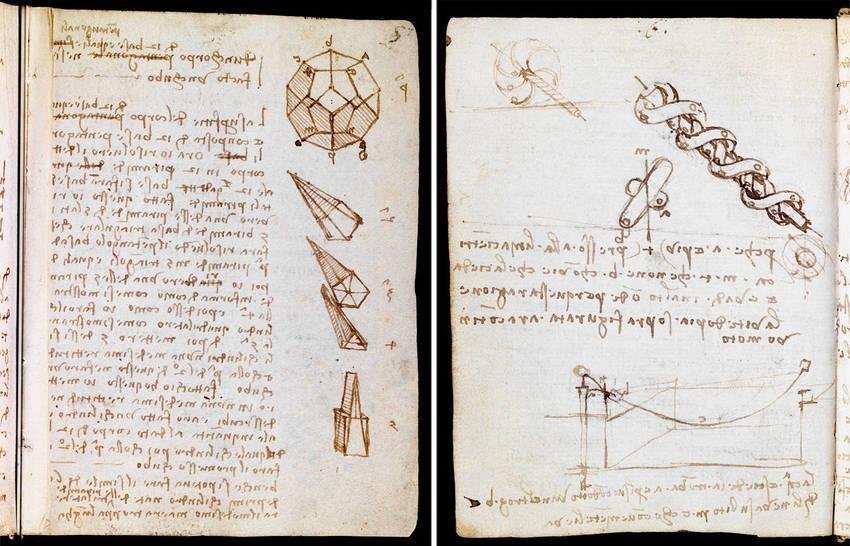The Victoria and Albert Museum has digitized three notebooks with texts and drawings by Leonardo Da Vinci. Now you can watch them for free in "amazing detail", online.

The famous painter of the Mona Lisa, Leonardo da Vinci (Leonardo da Vinci 1452 - 1519) is also known for the notebooks in which he recorded his thoughts and inventions. Five of these exciting notebooks, combined into three small volumes, are now available for free online. This collection, also known as Codex Forster, dates from 1487 to 1505.
Written in Leonardo's famous mirror-like manner, the notebooks examine a range of subjects, hydraulic mechanics, perpetual motion and a treatise on measurement of solids. The notebooks contain careful sketches and dialetterτα σχολιασμένα με notes in 16th-century Italian mirror script, which is read backwards and from right to left.
The notebooks are made of single-page writings and drawings by Leonardo da Vinci and have no particular order or date (although some have a date).
If you want to take a look at one of the most interesting minds in history, you can go straight to the notebooks, with the following links:
Codex Forster I
Codex Forster II
Codex Forster III
Websites take a while to load the viewer they contain. If for some reason it does not load, refresh the page.
More details and information about the notebooks can be found at the Victoria and Museum Albert. The British bookcase has high-resolution scanned more of Leonardo da Vinci's writings and drawings titled “The Codex Arundel", Which you can see just for free.





